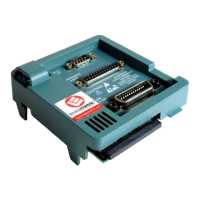Specifications
1–6
TDS 200 Series Digital Oscilloscope Service Manual
Table 1–2: General specifications (cont.)
Environmental
Temperature Operating 0° C to +50° C
Nonoperating –20° C to +60° C
Cooling Method Convection
Humidity +40° C or below ≤90% relative humidity
+41° C to +50° C ≤60% relative humidity
Altitude Operating 3,000 m
Nonoperating 15,000 m
Random Vibration Operating 0.31 g
RMS
from 5 Hz to 500 Hz, 10 minutes on each
axis
Nonoperating 2.46 g
RMS
from 5 Hz to 500 Hz, 10 minutes on each
axis
Mechanical Shock Operating 50 g, 11 ms, half sine
Mechanical
Size Height 151.4 mm (5.96 in.)
Width 304.8 mm (12 in.)
Depth 120.7 mm (4.75 in.)
Weight (approximate) When packaged for domestic shipment 3.6 kg (8.0 lbs)
Certifications and compliances
EC Declaration of
Conformity
(TDS 210, TDS 220 &
TDS 224)
(TDS 210, TDS 220,
TDS 224, P2100)
(P2100)
Meets intent of Directive 89/336/EEC for Electromagnetic Compatibility*; meets the requirements of FCC
Code of Federal Regulations, 47 CFR, Part 15, Subpart B, Class A:
CISPR 11 (Class A): Electromagnetic radiated and conducted emissions
EN 50082-1 European Community Requirements:
IEC 61000-4-2 electrostatic discharge
IEC 61000-4-3 radiated susceptibility**
IEC 61000-4-4 power line fast transients
IEC 61000-4-5 power line surge immunity
IEC 61000-4-6 conducted immunity to RF fields
IEC 61000-4-11 voltage dips, interrupts and variations
AS/NZS 2064, Australian emissions standard for Industrial, Scientific, and Medical Equipment
Low Voltage Directive 73/23/EEC as amended by 93/68/EED:
EN61010-1/A2:1995 Safety requirements for electrical equipment for measurement control, and
laboratory use
EN 61010-2-031:1994 Particular requirements for hand-held probe assemblies for electrical
measurement and test
* Instrument tested with shielded cables.
** Meets Performance Criterion A with allowed degradation of up to 5 major divisions of trace noise increase from 80 MHz to
200 MHz and up to 2 divisions of trace noise increase over the range of 200 MHz to 1000 MHz under a 3 V/m RF field. Ambient RF
fields may induce triggering when trigger threshold is offset less than 2.5 major divisions from ground reference.

